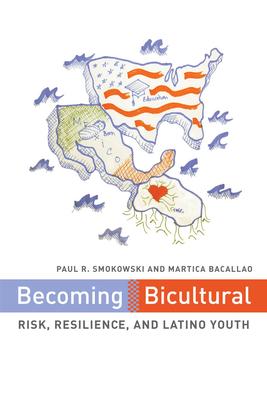"This is easily the best, and certainly the most empathic and insightful, treatment of the process of becoming bicultural in the United States that I have read. There is something for everyone in this book--researchers will find scientific evidence, clinicians will find insights to deepen their work, and all readers will find a teenager in its pages whose story will inform them and touch their hearts. Writing in a style that makes reading effortless, Smokowski and Bacallao render the bicultural experience accessible to all of us." LUIS H. ZAYAS, Washington University, St. Louis
"This book masterfully captures the stories of Mexican immigrants from the well-established communities in the Southwest as well as from newer communities in the Southeast. It documents a common voice of resiliency and hope and provides an insightful review of the challenges experienced by acculturating youth and their families as they pursue the American dream. A must read for practitioners and researchers interested in understanding the contemporary immigrant experience and its mental health implications." FLAVIO F. MARSIGLIA, Arizona State University
Although the United States has always been a nation of immigrants, the recent demographic shifts resulting in burgeoning young Latino and Asian populations have literally changed the face of the nation. While some Latino adolescents become alienated and turn to antisocial behavior and substance use, others go on to excel in school, have successful careers, and build healthy families. Drawing on both quantitative and qualitative data ranging from surveys to extensive interviews with immigrant families, Becoming Bicultural explores the individual psychology, family dynamics, and societal messages behind bicultural development and sheds light on the factors that lead to positive or negative consequences for immigrant youth.
Paul R. Smokowski and Martica Bacallao illuminate how immigrant families, and American communities in general, become bicultural and use their bicultural skills to succeed in their new surroundings. The volume concludes by offering a model for intervention with immigrant teens and their families that enhances their bicultural skills.
| FindBook |
有 2 項符合
Becoming Bicultural: Risk, Resilience, and Latino Youth的圖書 |
 |
Becoming Bicultural: Risk, Resilience, and Latino Youth 作者:Smokowski,Paul R./Bacallao,Martica 出版社:New York Univ Pr 出版日期:2011-02-08 語言:英文 規格:平裝 / 239頁 / 15.2 x 22.9 x 1.9 cm / 普通級 |
| 圖書館借閱 |
| 國家圖書館 | 全國圖書書目資訊網 | 國立公共資訊圖書館 | 電子書服務平台 | MetaCat 跨館整合查詢 |
| 臺北市立圖書館 | 新北市立圖書館 | 基隆市公共圖書館 | 桃園市立圖書館 | 新竹縣公共圖書館 |
| 苗栗縣立圖書館 | 臺中市立圖書館 | 彰化縣公共圖書館 | 南投縣文化局 | 雲林縣公共圖書館 |
| 嘉義縣圖書館 | 臺南市立圖書館 | 高雄市立圖書館 | 屏東縣公共圖書館 | 宜蘭縣公共圖書館 |
| 花蓮縣文化局 | 臺東縣文化處 |
|
|
圖書介紹 - 資料來源:博客來 評分:
圖書名稱:Becoming Bicultural: Risk, Resilience, and Latino Youth
|










